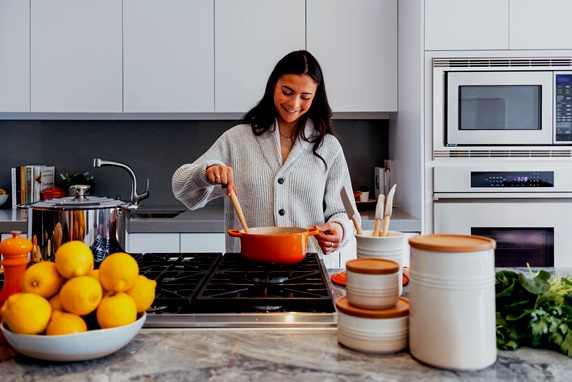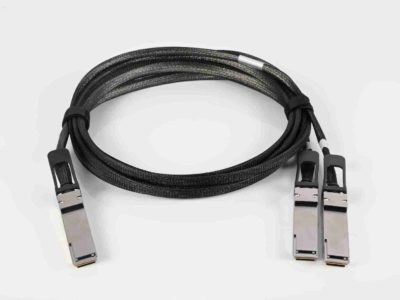By Ram Kezel
If you are staying at home, make the most out of it. Revise all your family’s recipes, create your personal blog, and start making money. Here are 4 steps on how to do that.
#1 Step: Look At Your Recipes Not As Instructions But As Philosophy
The Internet is already full of recipes. So, if you write a few more, it might get lost in the world wide web. To avoid that, you should see your recipes not as instructions for food making, but as part of your family history and philosophy. It will make your content unique and personal.
Be precise with what you write – both cooking details and correct grammar. If your family usually uses some specific slang for food or cooking processes, don’t avoid it, it brings a personal touch. Just don’t forget to explain it to your readers.
#2 Step: One Picture Is Worth Ten Thousand Words
Your end goal is not only to tell the recipes but help people to make them the way they should be made. Pictures are a helpful tool to achieve accuracy. According to inc.com, “approximately 65 percent of the population are visual learners.” Therefore, using images in blog posts gets 94% more views, states MDG Advertising.
Pictures create a crucial impact. It makes your website more visually appealing and recipes easier to follow. The important part is to take your pictures seriously. Make them using daylight when possible. Always double-check the shadows. Try different angles to find the best one. And keep it simple, don’t go too far with unnatural edits.
#3 Step: Share It Online In A Pleasing Way
The website might sound like a technical detail, but it’s a vital one. To seem credible online, you should have a personal website with a unique domain name. First of all, think of your blog name. It’s more memorable when your domain address is the same as the blog name. Then you need to create your website design. If you are new at this, you can use existing WordPress templates. After that, hosting services are necessary to put your website online.
When your website is up and running, keep taking care of it. For example, look up your website load time. If people open your website and it fails to load in a fast manner, they might close it and don’t give a second chance. To avoid this, scale your cooking pictures to a smaller size so that they wouldn’t burden your load time. There is an easy-to-follow hosting provider Hostinger tutorial for this matter.
#4 Step: Decide On Your Monetizing Options
With your priceless recipes put online, it’s time to work on monetizing plan. There are many different options to start earning from your website. You can choose one of them or combine several. But don’t be too greedy and avoid using all of them. This way, your recipes might lose their warmth and start looking like a sketchy scheme.
Option No. 1: Google AdSense
The first option – Google AdSense – is probably the easiest one. The idea behind it is that you dedicate a place for ads on your website, and you earn money every time someone clicks on it. It’s easy because you don’t need to deal directly with those who advertise themselves. Google does all the work. All you have to do is to make sure that your website is suitable for AdSense. You can check this in the Terms and Conditions.
Option No. 2: Ad space
This option is similar to the first one. Only this time, you skip Google and talk to advertisers directly. Now all control is in your hands. You decide not only on ad placement but also its type and price. All the negotiations about details can be a time-consuming task. You should create a media kit: show your website statistics with key facts, list all the possible ads positions with prices, and send it out to potential advertisers.
Option No. 3: Memberships
Another way to earn money with your recipes is to offer membership for the people. With this method, you are leaning from quantity to quality. You don’t need hundreds of thousands of readers. You only need some who are willing to pay for an exclusive membership. With memberships in mind, you can have generic recipes blog posts for the public. And then offer something extra for those who are willing to pay.
Option No. 4: Sell Your Products
If your recipes website grows a massive audience, you can go from online to offline with your brand products. A most obvious example could be a cookbook. But there are many other options on what you can sell. You can make branded aprons or measuring cups. Or, if you want to go bigger, you can create your sauce line and keep recommending it in your recipes. This model requires more significant investments. But the payback can be bigger as well.
Option No. 5: Collaborations
When creating a recipe website, you can start collaborating with various food brands and create sponsored content by using and recommending their brand. This method is easy to use because it looks organic in your feed. You can try and look for potential partners on your own, or you can team up with marketing and PR agencies. There are even online tools for that, such as Tomoson or Cooperatize.
Option No. 6: Online courses
Traditional family recipes are not only the ingredients but all those making tips and tricks as well. And you can share them in online courses. You can have your online classes streamed live or pre-recorded. You can make them in text with more detailed step-by-step guidance. Or save them as PDF downloads. The form of it is up to you.
If you are spending most of your time at home these days, you should consider starting your own recipes blog. And if you do it smart enough, you can start collecting earnings from it! Just find a unique point of view. Put effort into making alluring pictures. Create a high-quality high-speed website. And don’t forget the monetization.
































